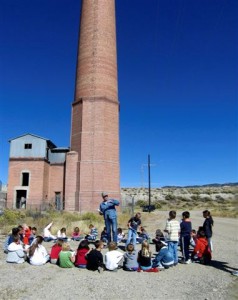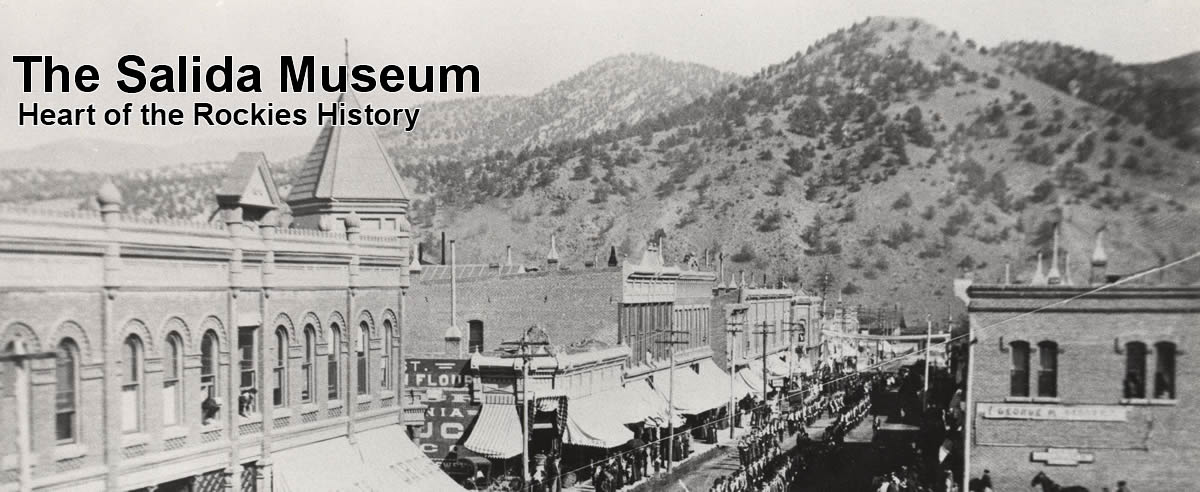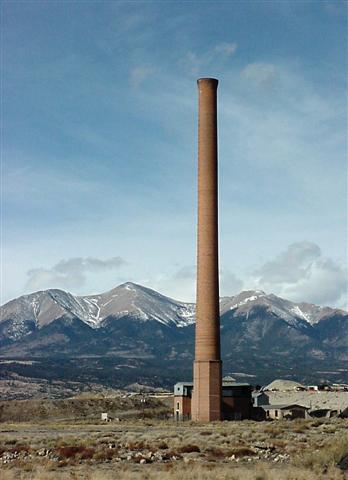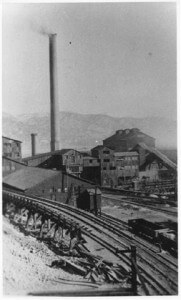The tall brick smokestack just west of Salida is the most visible reminder of the smelting industry that once employed thousands of workers most of whom lived nearby in Smeltertown. The Ohio-Colorado Smelting and Refining Company operated the smelter from 1902 until 1920. The company expanded, building smokestacks ever higher to carry away noxious gases. The last remaining stack was constructed in 1917 and was the tallest at 365 feet high.
Except for the big smokestack, little remained of the industry in the 1970s when interest in the historic landmark revived. The County, which had acquired the smelter property in 1938 and sold most of it to collect back taxes, became worried that the stack was a liability and threatened to demolish it. In response, more than 50 citizen activists organized the Save Our Stack (SOS) committee headed by Wendell Hutchinson and went to court with evidence that the masonry stack was structurally sound and that a responsible party would agree to accept the deed. The Salida Museum Association subsequently took title Oct. 24, 1974.
In 1976, during the American Revolution Bicentennial, the smokestack was placed on the National Register of Historic Places as a “highly visible monument to the mining industry and its workers.” It was among the first to be so designated of some 40 historic structures in Chaffee County that now appear on the register or the State list of historic places.
The history of the industry and how the stack was saved for future generations is told in the illustrated booklet Smokestack: the Story of the Salida Smelter by Dick Dixon, Gold Belt Publishing Co., Salida, 1987. Copies are on sale in the museum bookstore.
In the following decades, the EPA (U.S. Environmental Protection Agency) investigated and ordered a clean up of the industrial area. The lead/zinc smelter had dumped wastes along the banks of the Arkansas River including arsenic, cadmium, copper, lead, manganese and zinc. From 1924-1953 the site next to the smokestack had been used as a creosote plant for treating railroad ties. The last plant owner was the Koppers Company. The EPA’s record of decision reached in August 1997 restricted mining on 6.6 acres in Smeltertown, ordered containment of contaminated soils, placed deed restrictions on remedied parcels of land, ordered installation of fencing and ordered ground water monitoring. Clean up and mitigation was complete by 2005.
In July 2009, three wayside exhibit panels were installed at the base of the smokestack to tell the mining story to tourists in words and pictures. The exhibit marks the site as part of the Collegiate Peaks Scenic and Historic Byway, which runs through Chaffee County. In recent years, Salida Museum Association posted KEEP OUT signs and fenced off the base of the smokestack, but vandalism persists.







Comments are closed.